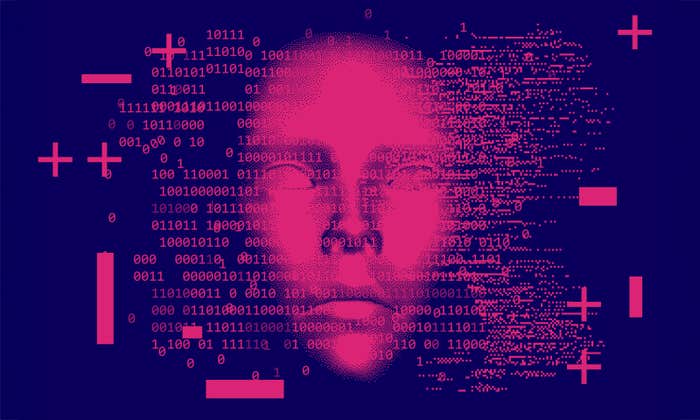The 2008 animated movie Waltz With Bashir starts with 26 bloodthirsty dogs hurtling down a road, causing havoc and terrorizing nearby people. It turns out to be a dream: Boaz Rein-Buskila keeps seeing that image while sleeping and can’t figure out why. He shares it with his friend, Ari Folman, hoping Folman, the director of the film, can help explain what it means. Waltz With Bashir probes into the two men’s memories of the 1982 Lebanon War, which they participated in as young Israeli soldiers. Folman, too, had been having his share of nightmares. He would dream of fleeting images of naked soldiers walking along the beach and watching flares light up Beirut. There was something strange about these images. They seemed to be free-floating bits of memory that kept bobbing above the waterline but never quite revealing what lay underneath. His challenge in making the movie was in reassembling the mysterious fragments from his distant past—in making sense of his faded memory.
We do that a lot—try to retrieve and make sense of our brain’s marooned information. The desire to anchor these thoughts has also crossed over into research. For instance, DARPA, the U.S. military research agency, is working to develop an implant to reboot a person’s memory. In July 2014, it awarded about $40 million of research funding to the University of California, Los Angeles, the University of Pennsylvania, and Lawrence Livermore National Laboratory to build the first such brain implants to overcome memory deficits. DARPA calls this “Restoring Active Memory,” a project with a convenient acronym. With almost 300,000 cases of traumatic brain injury among military personnel between 2000 and 2013, the agency wants to find a way for a veteran to relearn both long-term memory tasks like driving a car and recall experiences from their personal history. It’s a two-step process. First, to figure out how the brain stores information; then, to build a brain implant that will repair damage and re-record memory.
In a way, DARPA would like to mimic the restore points for data on our computers. The history of recording devices like computers has usually been a desire for something as efficient as the brain. Now, the recent work started on restoring the brain’s memory feels a little like borrowing an idea from our computers. In this evolution of recording, it would seem we’ve come full circle.
We’ve been recording our thoughts for a long time. The word, record, has its origins in cor, Latin for “heart.” Which is to say, to record is to repeat what our cor(e), the heart, thinks—a remnant from a time when we believed the heart, not the brain, to be the seat of memory. Scattered throughout history is a chain of dream catchers: remnants of memory devices that have recorded our thoughts. Archaeologists have found 60,000-year-old ladder-like striations on ostrich-egg shells in mountains in what is now South Africa. Some researchers say the intricate patterns are symbolic, perhaps signalling who owned the shells, or for show identity and artistic expression. Neolithic communities in ancient China scribed symbols on tortoise shells 8,600 years ago. The Vinča culture that lived in southeast Europe 7,300 years ago marked their clay pots with “proto-writing,” including a character that looks like the modern M. 5,000-year-old writing systems in Mesopotamia started as symbols inscribed on clay tablets, before ancient Egyptians wrote and drew on papyrus, produced from plant reeds along the Nile. The Chinese soaked hemp and silk in water and started recording on paper over nineteen hundred years ago. Strung along this continuum of recording surfaces are centuries of paper, tape, wire, followed by digital devices like the hard disk drive and solid-state memory. And of course, the source of it all: the brain, and, soon to come, the engineered brain. When people tweet images of cave art—as they did after the 2012 announcement of 40,000-year-old cave-wall images in northern Spain—it represents a sort of mash-up of three kinds of records: It’s a trace of our early cave “recordings” preserved in limestone, an array of 0s and 1s from the tweet transmitted to spinning hard disks in a remote server farm, and recording signals in our brain connecting these thoughts. All along, it’s been a steady process of transferring recordings, from the mind, to rock, paper, and Instagram.
Implicit in all acts of storing and fetching is a hope to derive some meaning.
There are two constants on this continuum of recorders. One is the hunger for more memory. By 2020, there are projected to be 44 billion terabytes (or 44 zettabytes) of digital data around the world, 10 times more than today. These are the buckets of bytes from every web page, tweet, movie, temperature sensor, MRI scanner, Mars-rover image, and more.
The other constant is a yearning to extract meaning from this data. This is true for our terabytes of tweets, DNA sequences, and particle-collision data at the Large Hadron Collider. (See Michael Tuts’ piece, “Discovering the Expected,” about how 99.995 percent of the LHC’s data was thrown out—there was simply too much to be recorded.) Making sense of our vast repositories of recordings—big data!—is a multi-billion-dollar industry with double-digit growth. At the same time, we are also looking to extract meaning from the memories dwelling in our brains. These are the thoughts that we can’t quite explain, the flashes from a recurring dream, cryptic remembrances from childhood, feelings of deja vu, and the fragments of disconnected thought, the kind Folman woke up with in Waltz With Bashir. It’s a good example of the difficulty in finding meaning from information.
During the 1982 Lebanon War, Ari Folman was a 19-year-old infantry soldier in the Israeli Defense Forces. In the movie, Folman probes hallucinations, interviews, and recollections to find out how this experience was connected with his memories of naked soldiers walking along the beach and watching flares light up Beirut. He re-records what he finds in digital bytes, eventually constructing an interpretation of his memories as a Flash animation. Along with Folman, we thread the foggy images together. We learn that Folman and his fellow soldiers were the ones who had fired those flares into the sky, that the flares illuminated a camp of refugees, and that the flares were a guide for a Lebanese militia that later massacred the refugees. Those were the facts surrounding the flash frames—the what, where, when, and who. Recording a movie was Folman’s journey to piece together the fuller narrative from disconnected thought. But piecing it together was also a way to make sense of the data, going from the facts of the dream to why they recurred in the first place.
Implicit in all acts of storing and fetching is a hope to derive some meaning. This is as much the case for the zettabytes of data in our machines as it is for fragmented memories in the brain. Just as it was for Folman, the challenge for the future engineered brain and the future recorders is as much in the interpretation of the recording. Not just that the records build up a narrative to address the what, where, when, and who, but also that they can be interpreted—the so-what.
Venkat Srinivasan is a science writer based in San Francisco. He tweets @vns2.


























